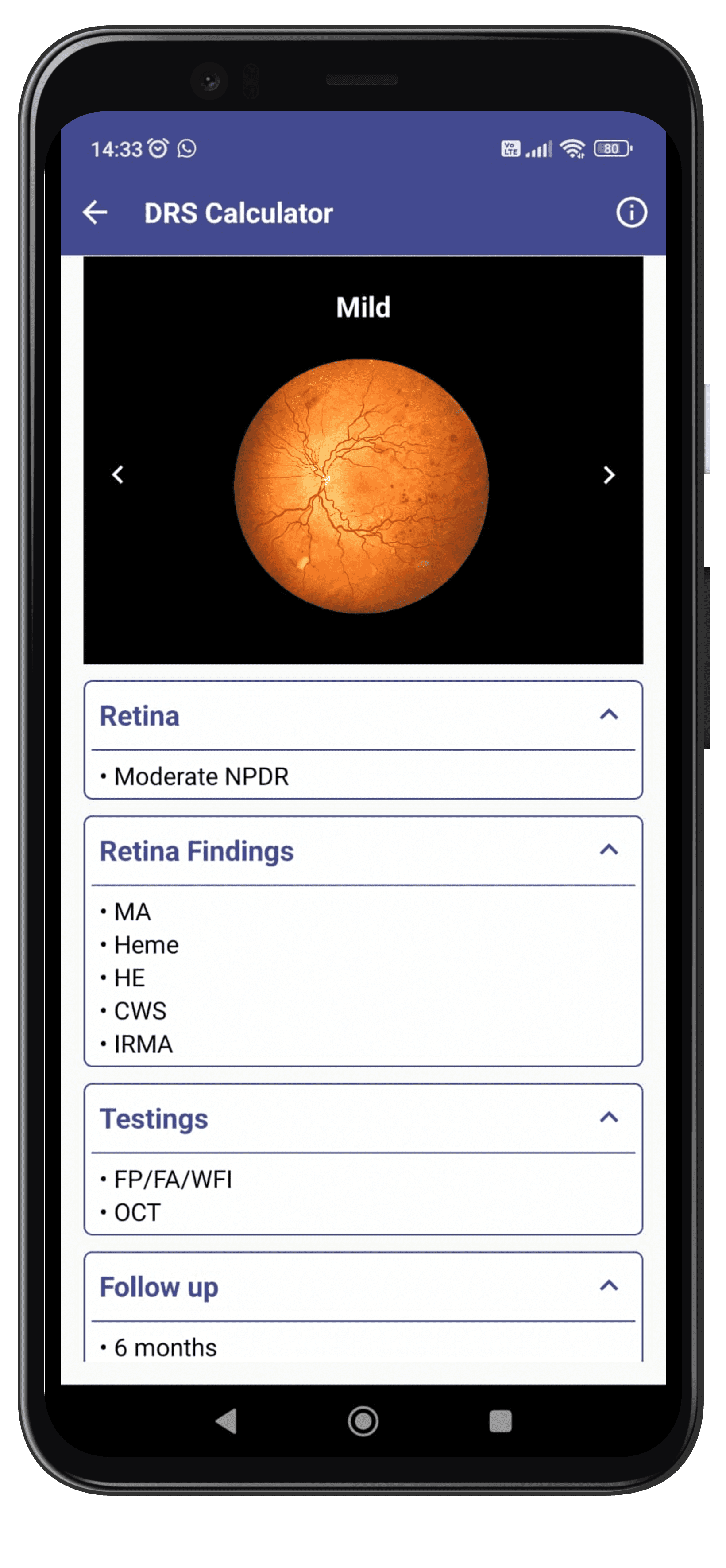Transposition Calculator - The transposition calculator serves as an indispensable resource for eye care professionals, streamlining the process of transposing spectacle prescriptions before they are prescribed. This tool enhances efficiency in clinical settings by swiftly and accurately transposing prescriptions, saving valuable time for both practitioners and patients. Additionally, it minimizes the potential for errors associated with manual calculations, ensuring precise and reliable prescription transposition.


Do you have inquiries for your peers or interesting eye care cases to discuss?
Share your thoughts and questions on the Eye Handbook Forums, where you can connect with fellow eye care professionals.
Join the platform to contribute to insightful conversations.
The Glaucoma Risk Calculator estimates the 5-year risk of developing Primary Open Angle Glaucoma in a patient with ocular hypertension.
Directions for Use
The calculators require the following patient information:
- Age
- Intraocular Pressure
- Central corneal thickness
- Vertical cup/disc ratio
- Humphrey pattern standard deviation mean
The results are calculated based on the Ocular Hypertension Treatment Study (OHTS) and the European Glaucoma Prevention Study (EGPS).
This calculator may be useful to clinicians in deciding the frequency of follow-ups and tests and the possible benefit of starting early anti-glaucoma treatment.


The Diabetic Retinopathy Calculator is your all-in-one reference to grade and treat diabetic retinopathy.
Features:
Interactive Grader
Pictures of the stages of Diabetic Retinopathy as per the Early Treatment Diabetic Retinopathy study (ETDRS)
Description of the signs of each stage
Reference tool for management options including treatment and recommended follow up intervals for every stage
Retinoblastoma calculators are valuable tools utilized by eye care professionals to assess the severity and extent of retinoblastoma, a rare eye cancer predominantly affecting children. These calculators employ standardized classification systems and clinical criteria to evaluate tumor size, location, invasion, and metastasis. By entering relevant ophthalmic evaluation data, these calculators provide objective grading and staging information that guides treatment decisions and prognostic assessments, facilitating personalized care and optimal management of retinoblastoma cases.


The DDX Calculator is a convenient and accessible tool for Eye Care Professionals that can be useful for narrowing down a diagnosis.
It has over 45 uncommon and rare signs seen on the Slit Lamp Examination and a possible list of differential diagnoses that can be associated with the signs. This tool can be helpful for ECPs in making more accurate and efficient diagnoses. It can also aid in identifying rare or complex conditions that may be difficult to diagnose without assistance.
A handy calculator to calculate the safe daily dose of Hydroxychloroquine based on patient weight.
Hydroxychloroquine is used for the treatment of conditions like rheumatoid arthritis, systemic lupus erythematosus, dermatological conditions etc. HCQ related retinal toxicity can range from maculopathy with retinal pigment epithelium changes to advanced bull's eye maculopathy.
The American Academy of Ophthalmology (AAO) revised its guidelines in 2016 to decrease the maximum dosage from 6.5 mg/kg/day to 5 mg/kg/day to minimize retinal toxicity.
The calculator calculates the maximum daily dose of HCQ in mg and mg/kg and gives an estimate of the 10-year and 20-year risk of retinopathy at the current daily dose.


The Dry Eye Disease Calculator is a grading calculator that categorizes dry eye disease on Mild, Moderate, Severe and Very Severe based on the classification of Dry Eye Disease by The Tear Film and Ocular Surface Society (TFOS) Dry Eye WorkShop (DEWS) II.
It describes the various stages of Dry Eye Diseases under the following broad headings:
- Symptoms
- Signs
- Treatment Options
- A graphical clinical anterior segment appearance
Eye Care Professionals can use this as a quick reference tool to grade and provide treatment options to their patients.
The Ocular Trauma Score Calculator is based on the OTS score developed by Kuhn et al.
The calculator requires you to enter clinical information from the patients first visit. The variables used to calculate the final score are :
- Best Corrected Vision on presentation
- Globe rupture
- Endophthalmitis if present
- Type of injury (Whether it was a perforating injury)
- Presence of Retinal Detachment
- Relative Afferent Pupillary Defect (RAPD)
This calculator can be used to prognosticate the visual outcome at 6 months and helps Eye Care Professionals counsel and triage these patients.

Cloud Nine Development LLC